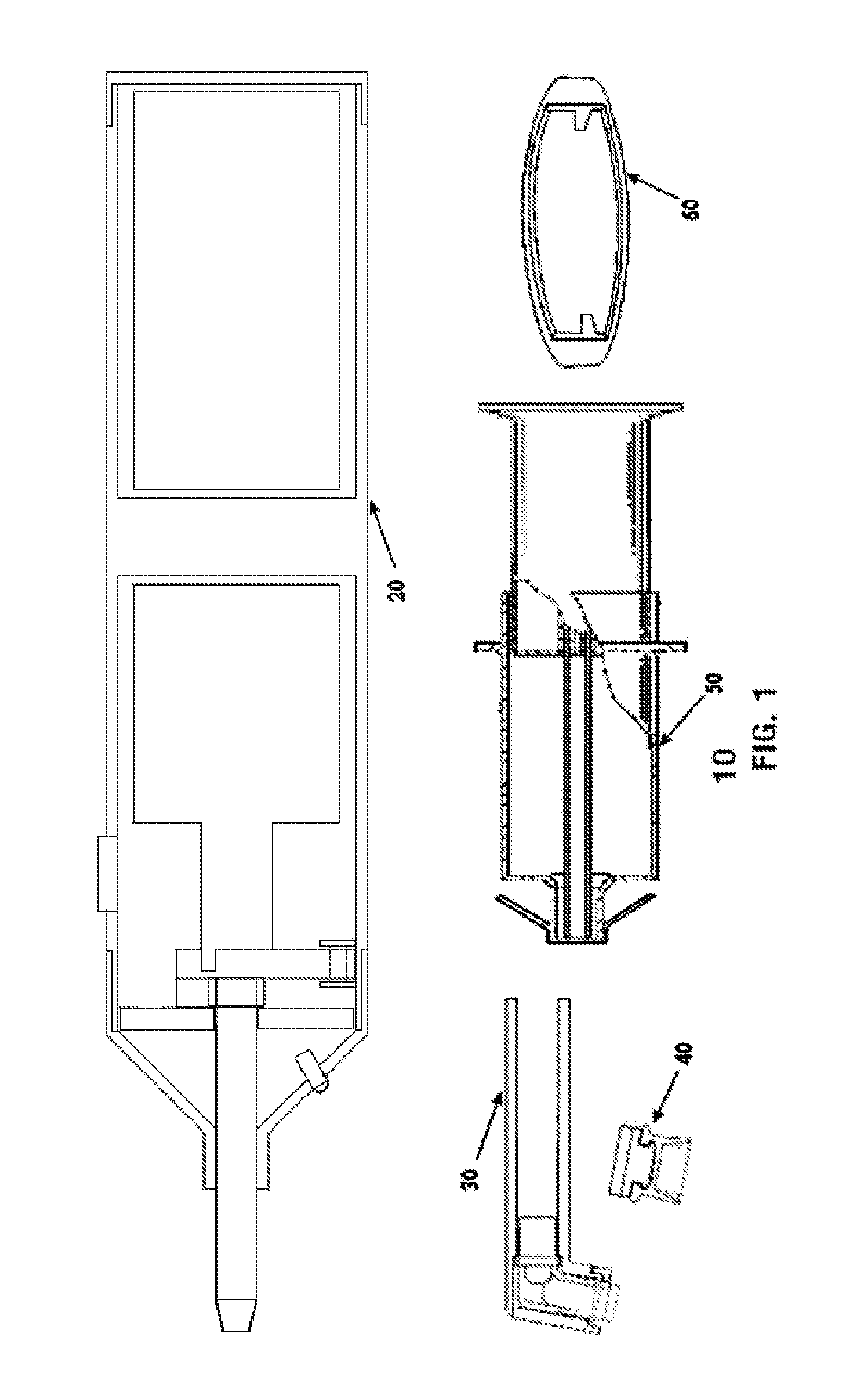Portable Simultaneous Tooth Prophylaxis And Bleaching System
a simultaneous, tooth prophylaxis technology, applied in the direction of amalgam presses/mixers, applications, teeth capping, etc., can solve the problems of time-consuming, poor engagement and operating noise, and high manufacturing cost of gear connections between driving and driving rotors, so as to reduce paste splatter, reduce the working life of motor shaft and driving cam, and avoid the time-consuming process
- Summary
- Abstract
- Description
- Claims
- Application Information
AI Technical Summary
Benefits of technology
Problems solved by technology
Method used
Image
Examples
Embodiment Construction
[0048]FIG. 1 shows the system components of the tooth prophylaxis and bleaching system 10 which consists of a battery-powered driving handpiece 20, a dental angle 30, a rubber cup and rotor-cup adapter 40, a dual-component paste dispenser 50, and a protecting mouthpiece 60.
[0049]FIG. 2 shows a cross-sectional assembled view of the battery-powered driving handpiece 20 including the dental angle 30 with the rubber cup assembly 40.
[0050]FIG. 3 shows the parts inside of the handpiece 20: a battery chamber 22, a direct current (DC) electric motor 23 with an output rotating shaft 26, an on-off switch 213, a driving cam 24 with a rack and pinion connection to a driving shaft 29 which transfers the output of the cam to the dental angle, a driving shaft positioner 28 whose central hole holds the driving shaft 29 axially, an light bulb 25, and a basic housing 21 with a housing output cap 211 and a housing battery cap 212 to enclose all the parts.
[0051]FIG. 4 shows the transformation mechanism...
PUM
 Login to View More
Login to View More Abstract
Description
Claims
Application Information
 Login to View More
Login to View More - R&D
- Intellectual Property
- Life Sciences
- Materials
- Tech Scout
- Unparalleled Data Quality
- Higher Quality Content
- 60% Fewer Hallucinations
Browse by: Latest US Patents, China's latest patents, Technical Efficacy Thesaurus, Application Domain, Technology Topic, Popular Technical Reports.
© 2025 PatSnap. All rights reserved.Legal|Privacy policy|Modern Slavery Act Transparency Statement|Sitemap|About US| Contact US: help@patsnap.com



